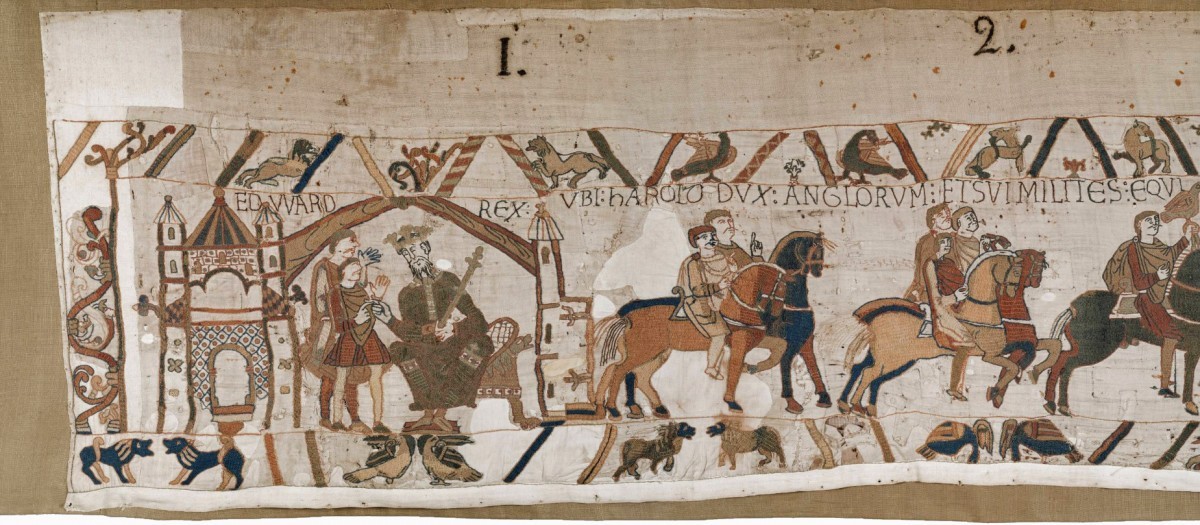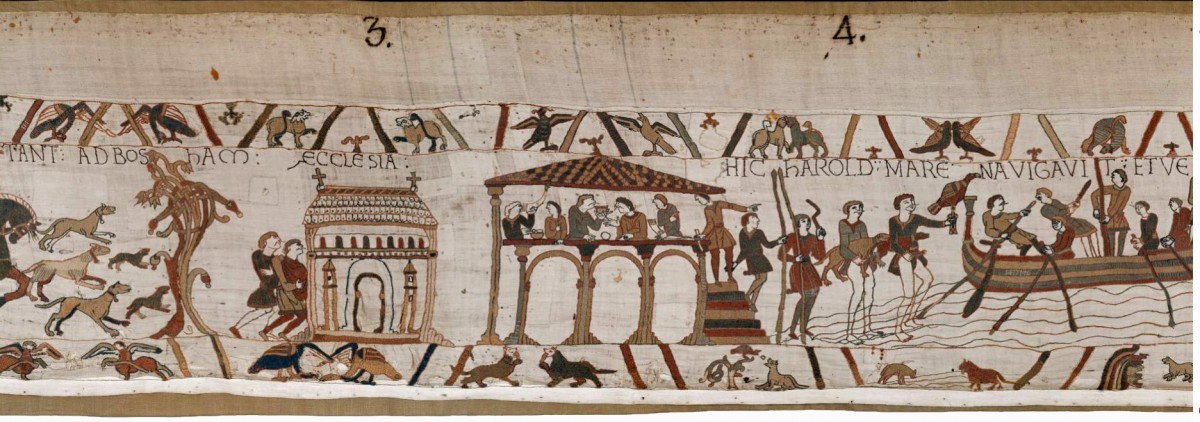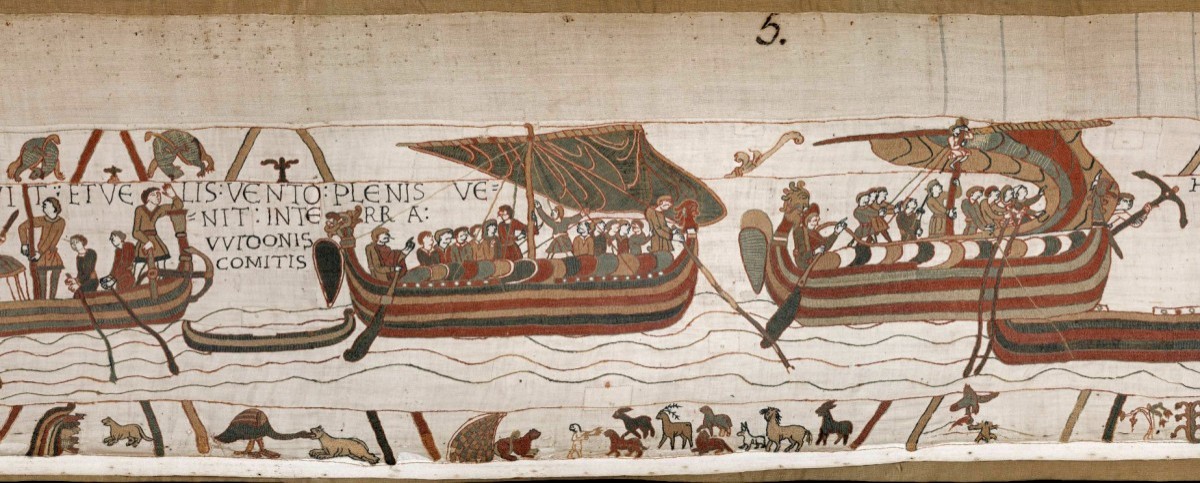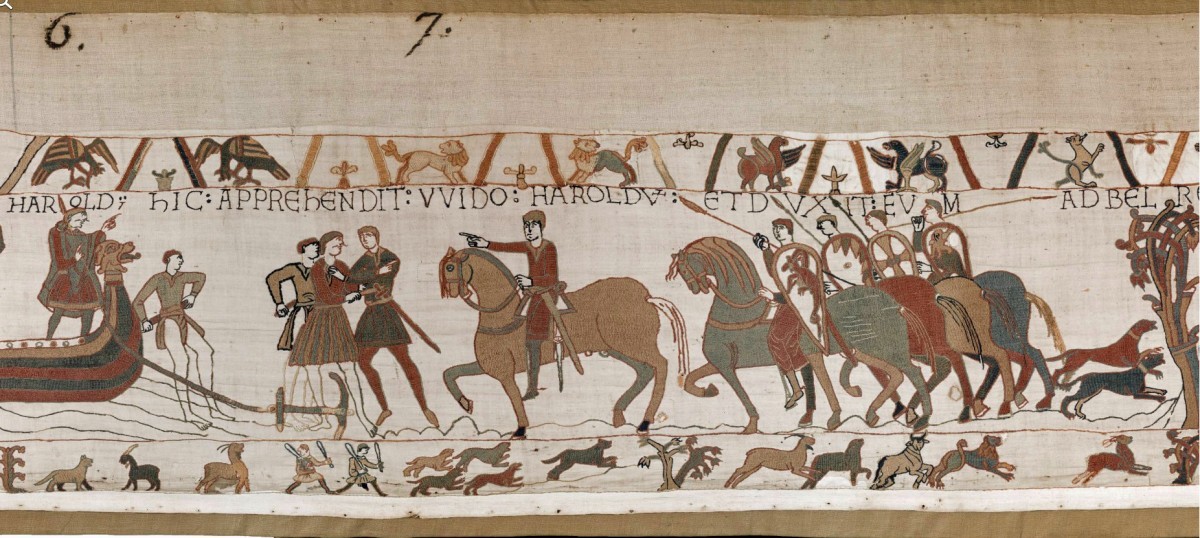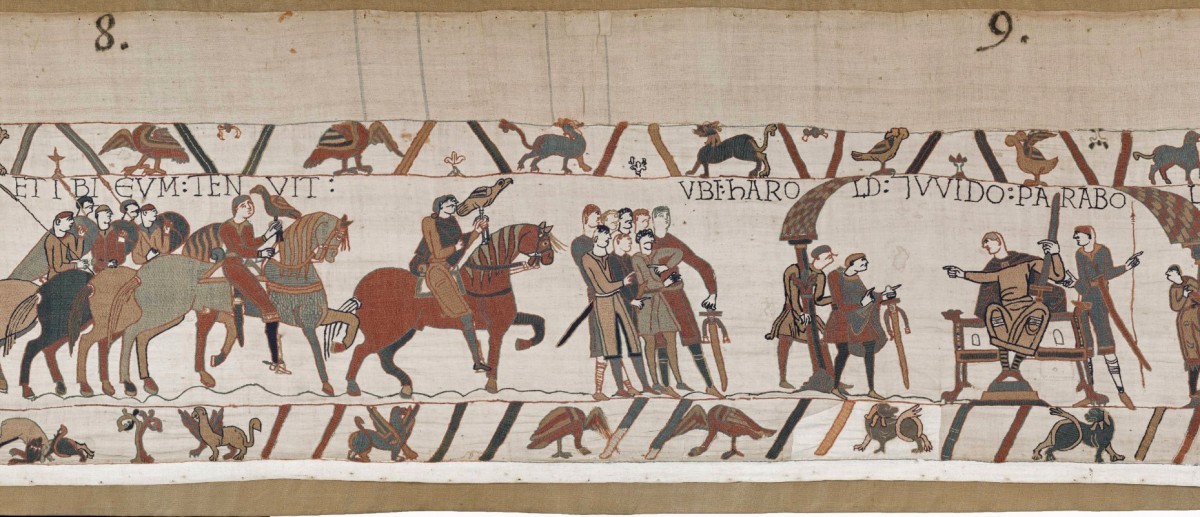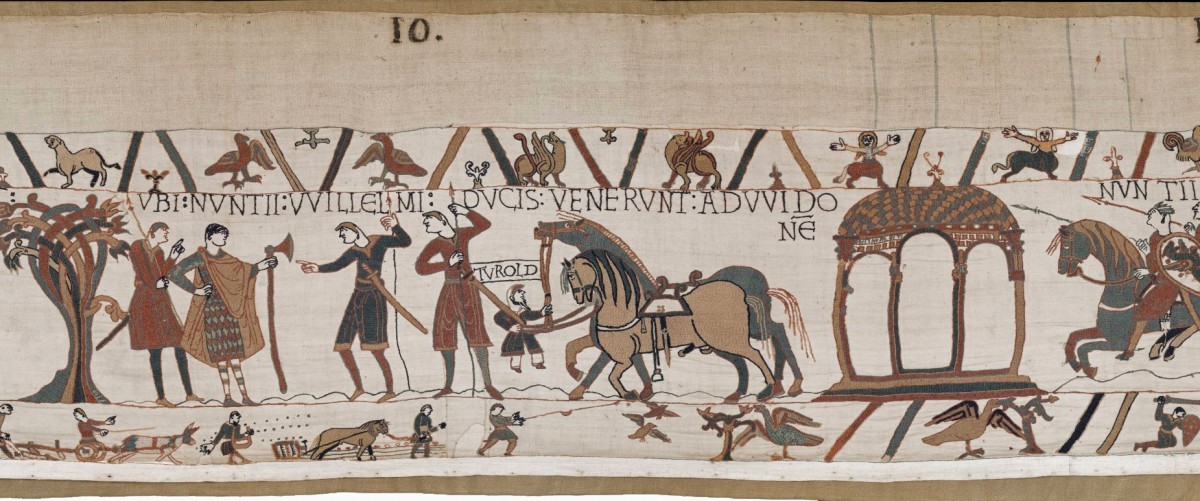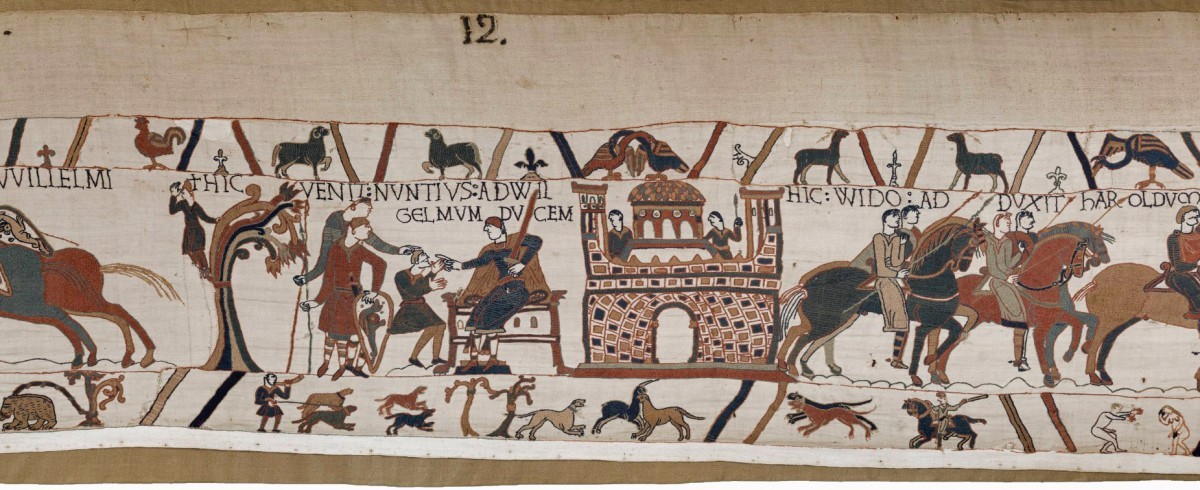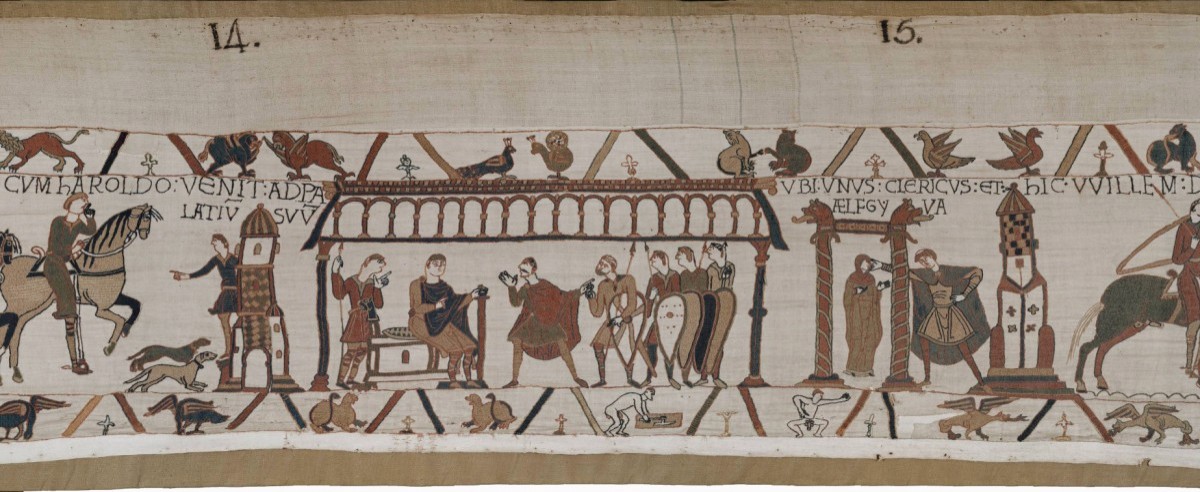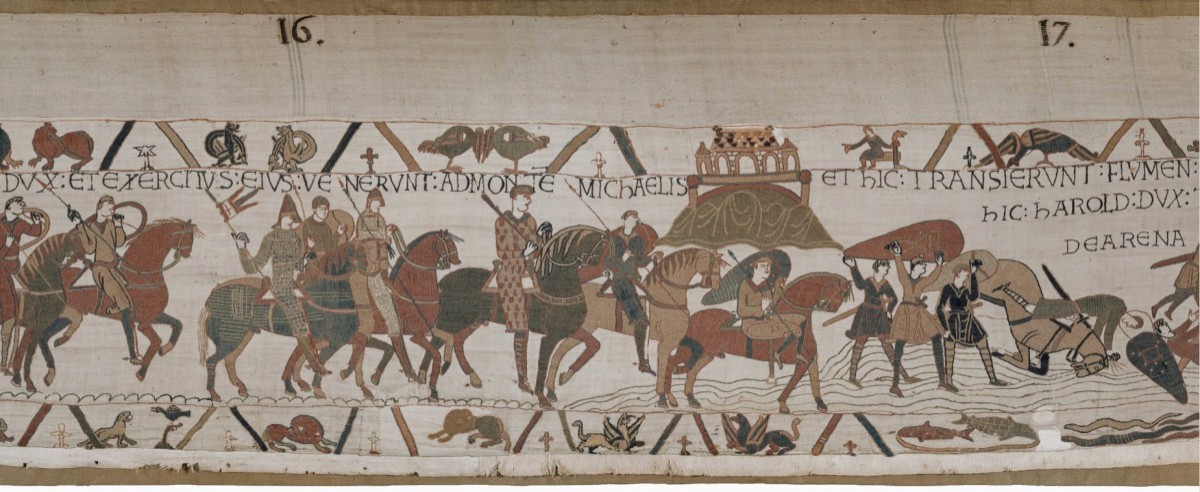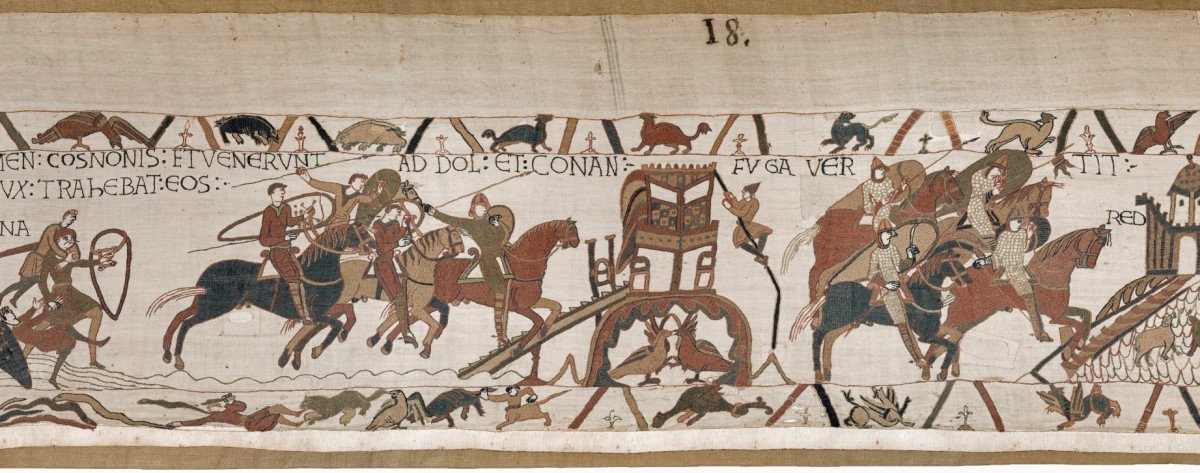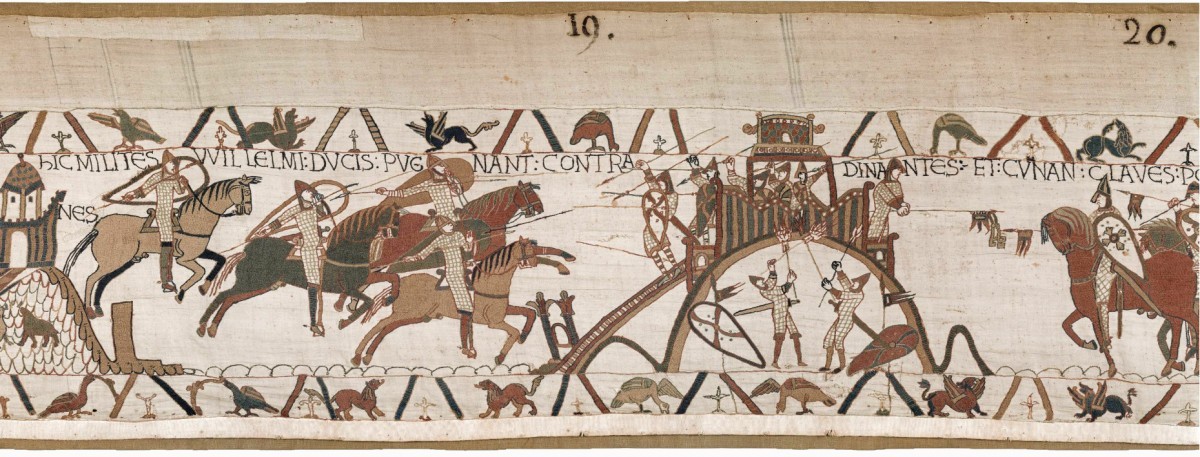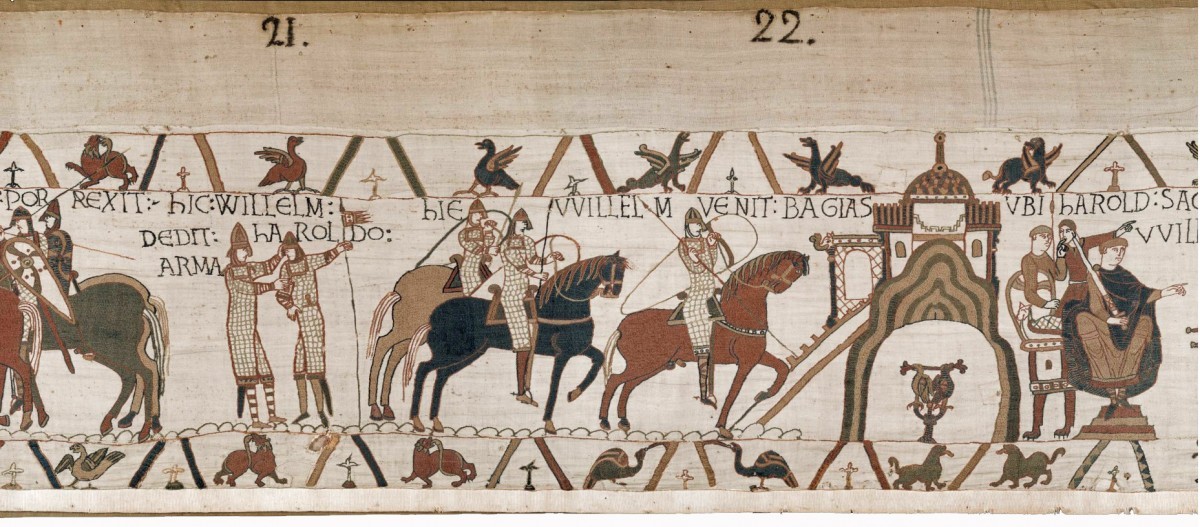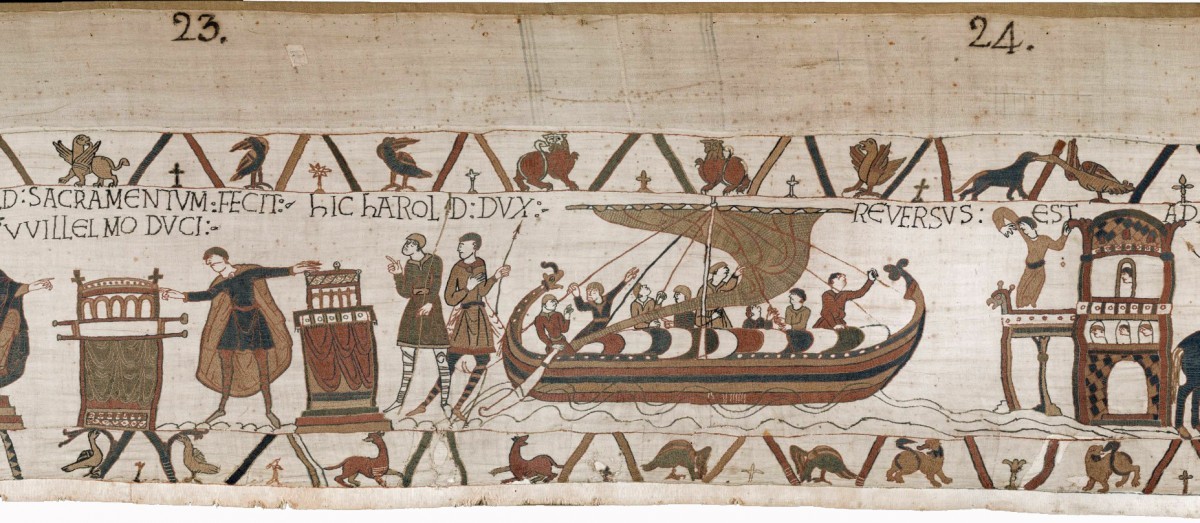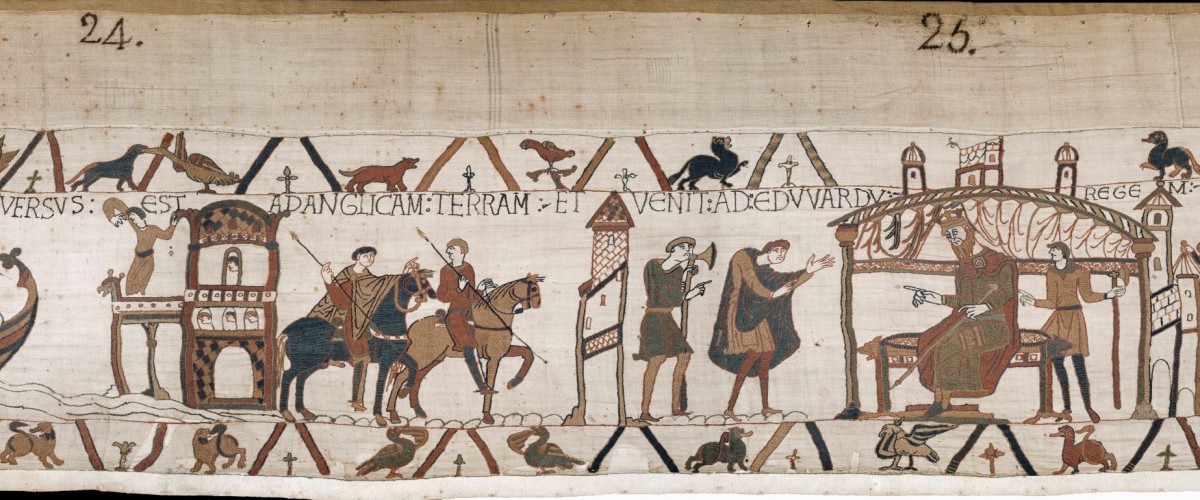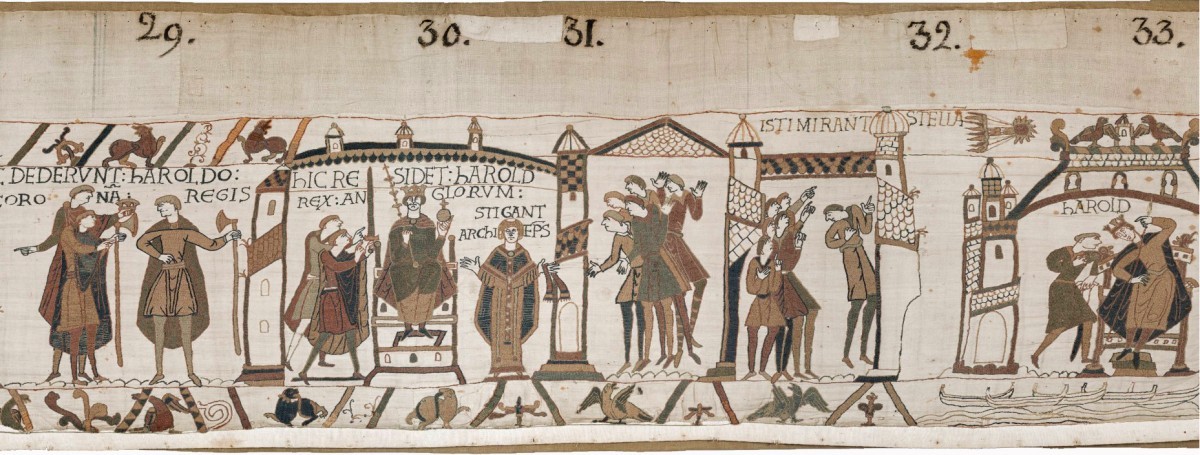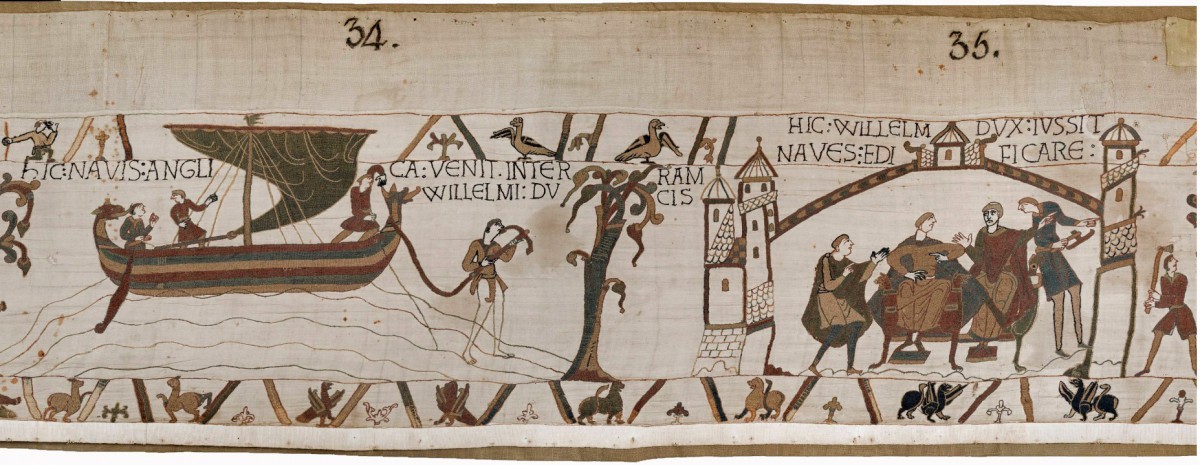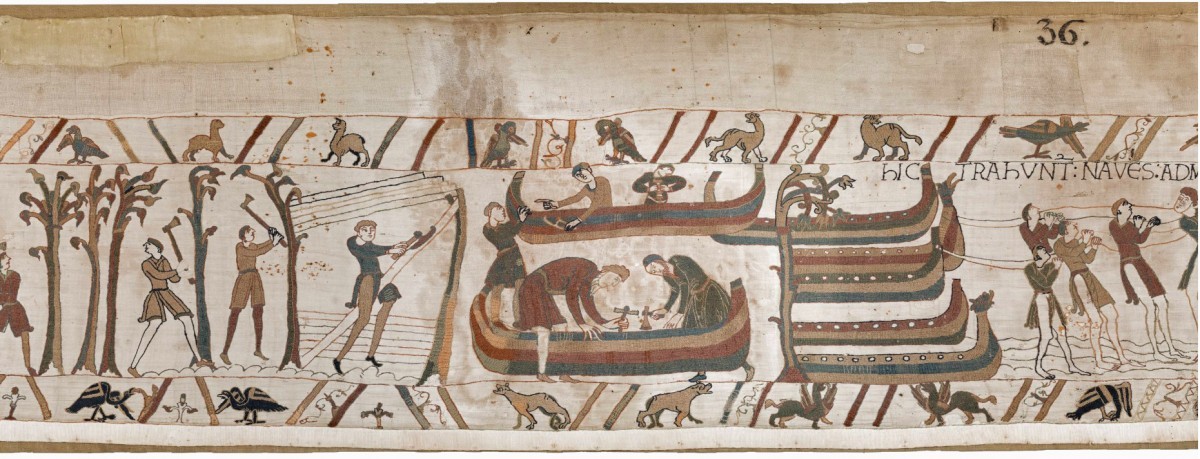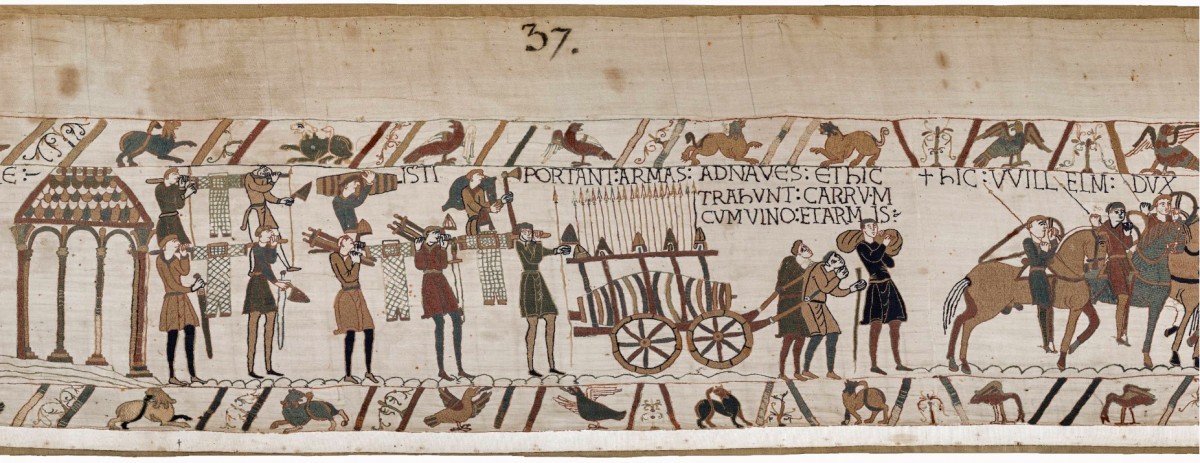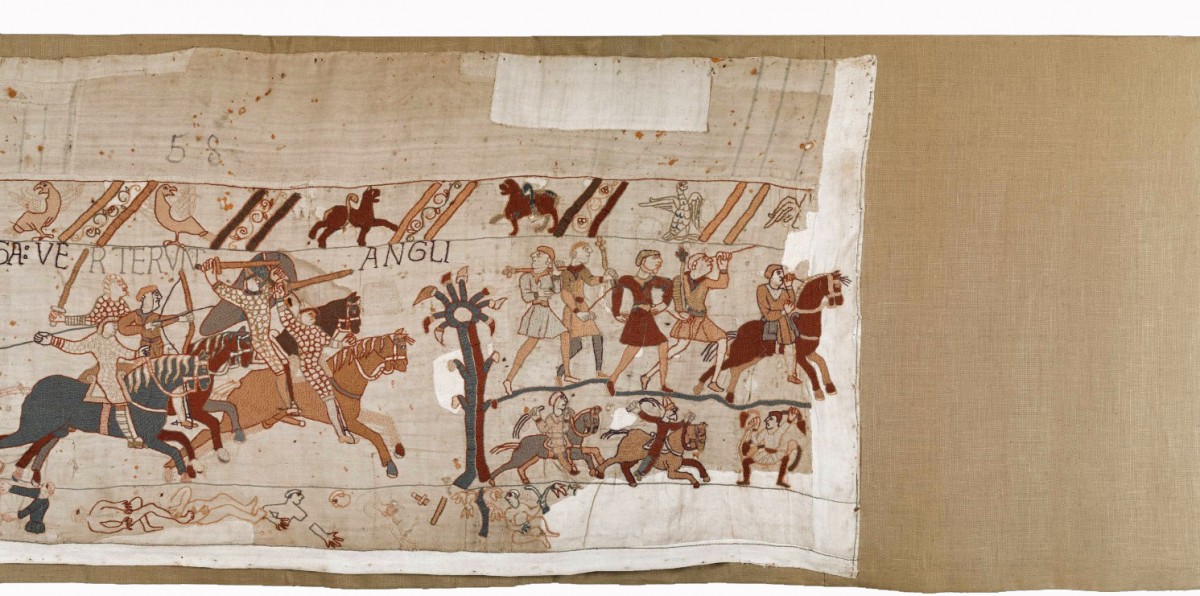Oriental Rugs Dictionary
Bayeux Tapestry
Bayeux Tapestry medieval embroidery Bayeux Tapestry, medieval embroidery depicting the Norman Conquest of England in 1066, remarkable as a work of art and important as a source for 11th-century history. The tapestry is a band of linen 231 feet (70 Meters) long and 19.5 inches (49.5 cm) wide, now light brown with age, on which are embroidered, in worsteds of eight colors, more than 70 scenes representing the Norman Conquest. The story begins with a prelude to Harold’s visit to Bosham on his way to Normandy (1064?) and ends with the flight of Harold’s English forces from Hastings (October 1066); originally, the story may have been taken further, but the end of the strip has perished. Along the top and the bottom run decorative borders with figures of animals, scenes from the fables of Aesop and Phaedrus, scenes from husbandry and the chase, and occasionally scenes related to the main pictorial narrative. It has been restored more than once, and in some details the restorations are of doubtful authority. When first referred to (1476), the tapestry was used once a year to decorate the nave of the cathedral in Bayeux, France. There it was “discovered” by the French antiquarian and scholar Bernard de Montfaucon, who published the earliest complete reproduction of it in 1730. Having twice narrowly escaped destruction during the French Revolution, it was exhibited in Paris at Napoleon’s wish in 1803–04 and thereafter was in civil custody at Bayeux, except in 1871 (during the Franco-German War) and from September 1939 to March 1945 (during World War II). Montfaucon found at Bayeux a tradition, possibly not more than a century old, that assigned the tapestry to Matilda, wife of William I (the Conqueror), but there is nothing else to connect the work with her. It may have been commissioned by William’s half brother Odo, bishop of Bayeux; Odo is prominent in the later scenes, and three of the very few named figures on the tapestry have names borne by obscure men known to have been associated with him. This conjecture would date the work not later than about 1092, an approximate time now generally accepted. The tapestry has affinities with other English works of the 11th century, and, though its origin in England is not proved, there is a circumstantial case for such an origin. The tapestry is of greater interest as a work of art. It is also important evidence for the history of the Norman Conquest, especially for Harold’s relation to William before 1066; its story of events seems straightforward and convincing, despite some obscurities. The decorative borders have value for the study of medieval fables. The tapestry’s contribution to knowledge of everyday life about 1100 is of little importance, except for military equipment and tactics.
